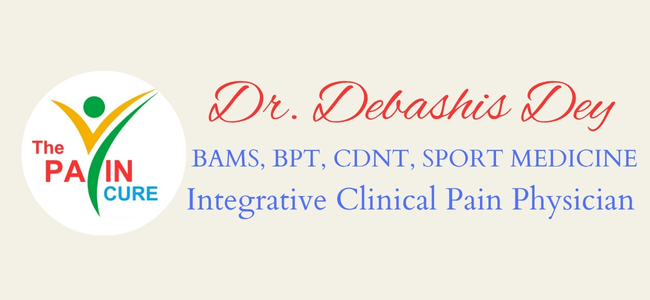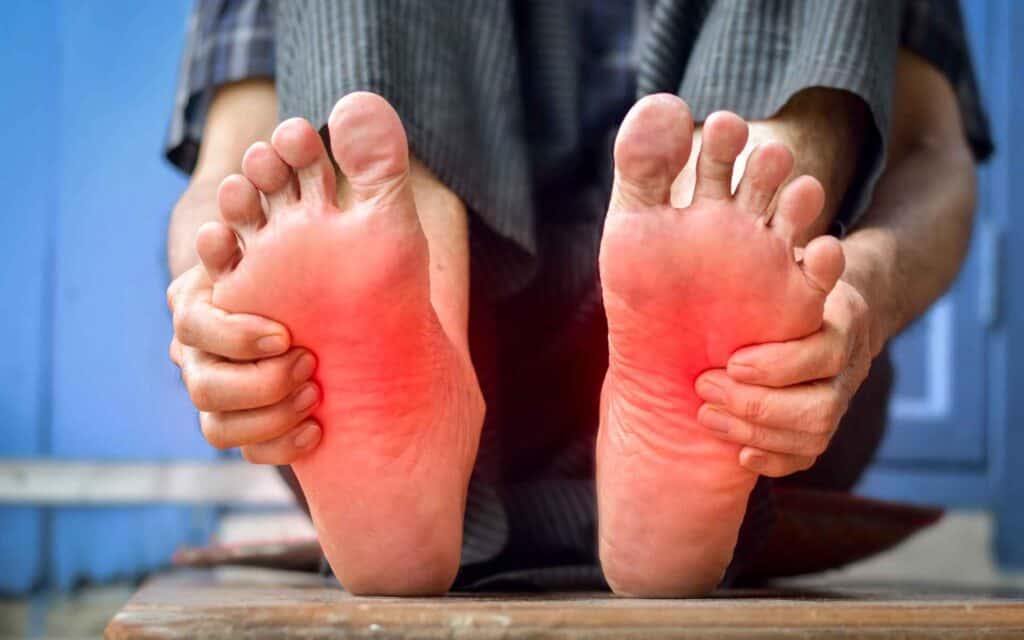Diabetic neuropathy is nerve damage caused by chronically high blood sugar (glucose) levels. Over time, elevated glucose can injure nerves, and also damage small blood vessels that carry oxygen/nutrients to those nerves.
Most often, neuropathy affects the peripheral nerves — e.g. in the feet and legs, and later maybe hands/arms. But there are other types: autonomic neuropathy (nerves to organs), proximal neuropathy, focal/mononeuropathy etc.
Symptoms
Possible symptoms depend on what kind(s) of nerve(s) are affected. Some common ones:
Type Symptoms
Peripheral (sensorimotor) Tingling, burning pain, sharp pains/cramps; numbing or loss of temperature/pain sense; muscle weakness; sensitivity to touch. Often worse at night.
Autonomic Problems with digestion (nausea, gastroparesis), bladder issues, blood pressure fluctuations, heart rate changes, sweating abnormalities.
Proximal / Mononeuropathy Pain in hips, buttocks, thighs; weakness; difficulty rising from sitting, etc. Or specific nerve-affected areas.
Risk Factors & What Makes It Worse
- Duration of diabetes, how well blood sugar is controlled.
- High blood pressure, high cholesterol.
- Being overweight, smoking.
- Kidney problems can contribute.
Diagnosis / How It’s Assessed
To diagnose diabetic neuropathy, doctors/therapists may use:
Clinical history: symptoms, how/when they started, what makes them better/worse.
Physical exam: checking strength, reflexes, sensation to touch, pain, temperature, vibration.
Specific tests:
Monofilament test (touch sensation)
Vibration sense (using tuning fork)
Nerve conduction velocity / EMG (for more detailed quantification)
Autonomic testing if autonomic nerves are suspected.
Treatment / Management
While nerve damage often cannot be completely reversed, many strategies can slow progression, reduce symptoms, and improve quality of life.
Here are main components of management:
Glycemic (Blood Sugar) Control
Keeping blood sugar as close to target as possible to prevent further nerve damage.
Managing other metabolic factors (lipids, blood pressure).
Lifestyle Measures
Regular exercise helps improve blood flow and may help nerve function.
Maintaining healthy weight.
Avoiding smoking.
Foot care: because loss of sensation can lead to undetected injuries, infections. Daily inspection of feet, proper footwear etc.
Symptom Relief (Pain / Sensation Issues)
Medications: anti-seizure drugs (gabapentin, pregabalin), certain antidepressants, topical agents etc.
Physical therapy / rehabilitative therapies: to maintain or improve muscle strength, reduce pain, improve balance, mobility.
Non-drug techniques: TENS (transcutaneous electrical nerve stimulation), acupuncture, massage, etc.
Support & Restore Function
Exercises for strength, flexibility, balance.
Sensory retraining (e.g. to help re-awaken or maintain sensory feedback).
Assistive devices if needed (walking aids, modified footwear).
Prevent and Treat Complications
Ulcers, sores, infections in feet if sensation is decreased.
Addressing autonomic symptoms if present.
Integrative Pain Management Approach (What Dr. Debashis Dey Likely Offers / Could Offer)
Dr. Debashis Dey’s practice involves physiotherapy, electro-homeopathy, sports medicine, dry needling, pain clinic etc. Here’s how these might map to treating diabetic neuropathy:
Physiotherapy: Exercise programs (strengthening, stretching), balance training, gait training, possibly sensory retraining to improve sensation/coordination.
Dry needling / Needling-type therapies: These may help with pain relief by modulating neural pathways, reducing local muscle tightness or spasm, improving circulation.
Multidisciplinary & Tailored Treatment: Given his titles (“Ortho, Neuro, Spine, Joint Pain Specialist Clinical Pain Physiotherapist & Consultant Electro-homeopathic Pain Physician”), he likely assesses each case individually: how bad is the neuropathy, what symptoms are dominant, what functional impairment is there, coexisting issues etc., then plans treatment accordingly.
Self-management / Education: Teaching the patient about foot care, about lifestyle changes, exercises to do at home, managing blood sugar etc.
Use of Modalities: Possibly TENS, other electrical stimulation, manual therapy, massage, and perhaps certain topical treatments, to alleviate pain and improve nerve function or at least reduce symptoms.

